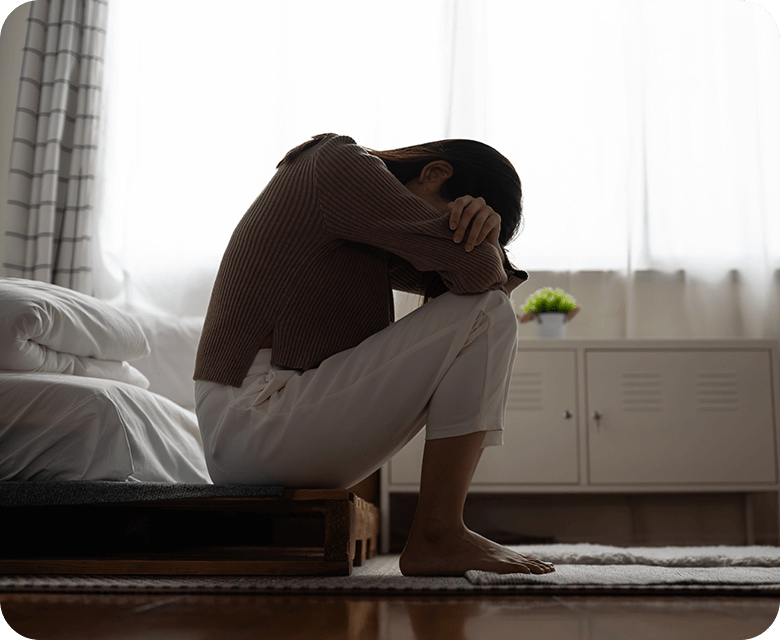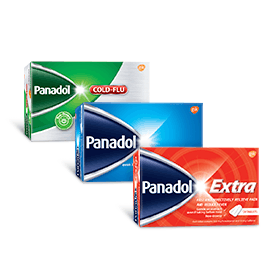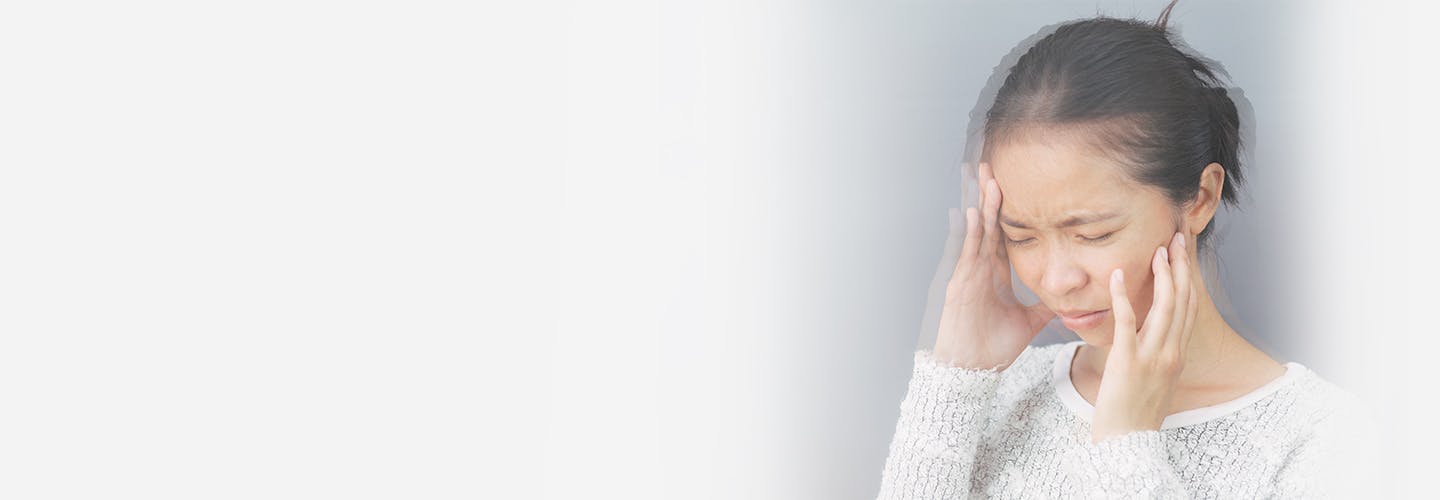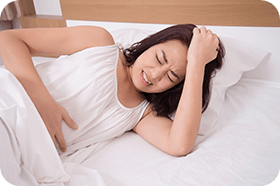Migraine Headaches – Symptoms and treatment
If you’re feeling a headache on just one side of your head, you could be suffering from a migraine. It’s important to know the distinction between a regular headache and a migraine, as this will help determine which treatment option makes the most sense for you. Seek medical advice if unsure or if you suspect migraine.
What are migraine headaches and who gets them?
Migraines are different from tension or cluster headaches. According to the migraine definition by the Migraine Trust, it’s a complicated condition that presents with a variety of symptoms1. Some people may experience only headaches, while others may also feel sick and nauseous and in some cases even notice that something isn’t quite right with their vision. Migraines affect around 12% of the world population2 and are the third most common illness globally. Women are nearly three times more like to suffer migraines than men.3
Migraines are typically not life-threatening, but they cause severe pain that, if not promptly addressed, can last for many hours and sometimes even days.

What are the top three symptoms of migraine?
Migraines have different phases and certain symptoms are associated with each phase.
A migraine headache has certain common signature symptoms:
1. Often one-sided throbbing or pulsing pain
2. Sensitivity to light
3. Vomiting
A migraine is associated with a more intense pain than a regular tension headache. The pain is often throbbing and movement can make it worse.
Everyone is different, but here are some of the symptoms you may experience:
- Feeling generally unwell for up to two days before the start of the migraine
- Blurred vision or visual disturbances such as flashing lights
- Sensitivity to light, sound, or certain smells
- Feeling nauseated
What are common migraine symptoms?
Migraines cause a debilitating headache, dizziness, and nausea. An aura, or disruption of the vision can be a warning sign that a migraine is about to start.

Early Stage
Many acute and chronic migraine sufferers notice certain symptoms occur one or two days before they get a migraine headache. This period is referred to as the prodrome phase.
During this stage, you may notice the following signs and symptoms:
- Constipation
- Depression or mood changes
- More intense food cravings
- A stiffer neck
- Increased urination
- Increased tiredness
- Irritability
Around 25% of migraine patients get an aura4. People often describe auras as light flashes or bright spots that appear before the eyes. They usually go away within 30 minutes.
There are other typical symptoms of auras:
- Seeing light shapes or flashes
- Temporary loss of vision
- Difficulty speaking
- Tingling sensation in face or arms or legs
Attack phase
An aura is usually a strong signal that a migraine attack is about to start. The attack phase of a migraine is when the head pain happens. This pain can be throbbing, pulsating, or feel like pounding.
Migraine pain is severe and people often require immediate pain treatment and bed rest.
Other signs of a migraine attack are:
- Nausea
- Vomiting
- Feeling dizzy
- Feeling faint
- Headache on one side of head or in the forehead
Last phase
The postdrome phase is the last stage of a migraine. During this phase, people often notice these symptoms:
- Mood changes
- Fatigue
- Mild headache
No-headache migraine
Some people get a migraine without a headache. They’re also called silent or painless migraines. People who get these types for migraines usually have auras.
Other symptoms of a silent migraine are similar to those of a classic one but without any pain in the head:
- Aura
- Blurry vision
- Sensitivity to light
- Dizziness and nausea

How long do migraines last?
Migraine symptoms can last from a few hours to a few days, and attacks can be reoccurring.
Fortunately, there are numerous management options that can help you substantially reduce the severity and recurrence of migraines.
What causes migraines?
Researchers aren’t entirely sure why migraines occur but there are many different things that can trigger a one.
While the exact reasons for migraines aren’t well understood, the condition tends to run in families.
People who suffer from migraines tend to get them once or twice a month. If you have them at least 15 days per month, you may have chronic migraines.
Hormones and certain brain biochemicals are some of the factors researchers are exploring in their search to discover what causes migraines.
Migraine triggers
Migraines can be triggered by numerous factors in an individual’s lifestyle and direct environment. Below are some of the most common triggers that have been identified to contribute to the onset of a migraine. To help identify what's contributing to your migraines, try avoiding these things:
- Alcohol (particularly red wine or beer)
- Large volumes of cheese, chocolate and/or citrus fruits
- Skipping meals
- Extended periods of stress and/or over excitement
- Fatigue brought on by lack of sleep
- Exposure to bright or flickering light, strong smells, or loud noises
What are some migraine treatment options?
There are many different treatments available for migraine. But it’s best to learn your triggers to avoid attacks in the future.
When you’re treating a migraine, you may have many questions. What are the best options? Is Panadol good for migraines? Can I treat migraines naturally?
Most migraine treatment options aim to relieve symptoms and pain.
Because certain things can trigger the condition, people who suffer from chronic migraines will want to find out what those are to prevent attacks in the future.
Pain medication
Medication like Panadol Migraine aims to relieve the headache from migraine pain. Many people take a painkiller like paracetamol as soon as they can feel a migraine coming on. Panadol Migraine is specially formulated to relieve even severe throbbing and pulsating pain.
Preventative medication
Certain blood pressure-lowering medications like beta blockers, antidepressants, anti-seizure medications and even botox may help to prevent migraine pain in the future. It’s best to speak to your doctor about the right option for you.
There are many natural options to relieve the symptoms of a migraine, however, if you’re experiencing persistent or recurrent migraine headaches then it’s best to consult your healthcare professional. They may suggest lifestyle changes that include:
- Stress reduction
- Avoiding migraine triggers
- Hormone therapy
- Biofeedback
- Meditation
- Acupuncture
Is Panadol good for migraines?
Panadol tablets contain the active ingredient paracetamol that relieves the pain from headaches. It’s suitable to relieve the pain from a migraine attack.











